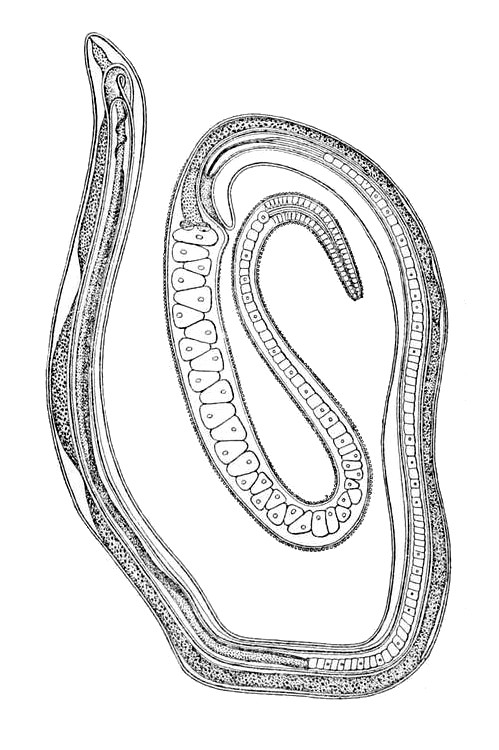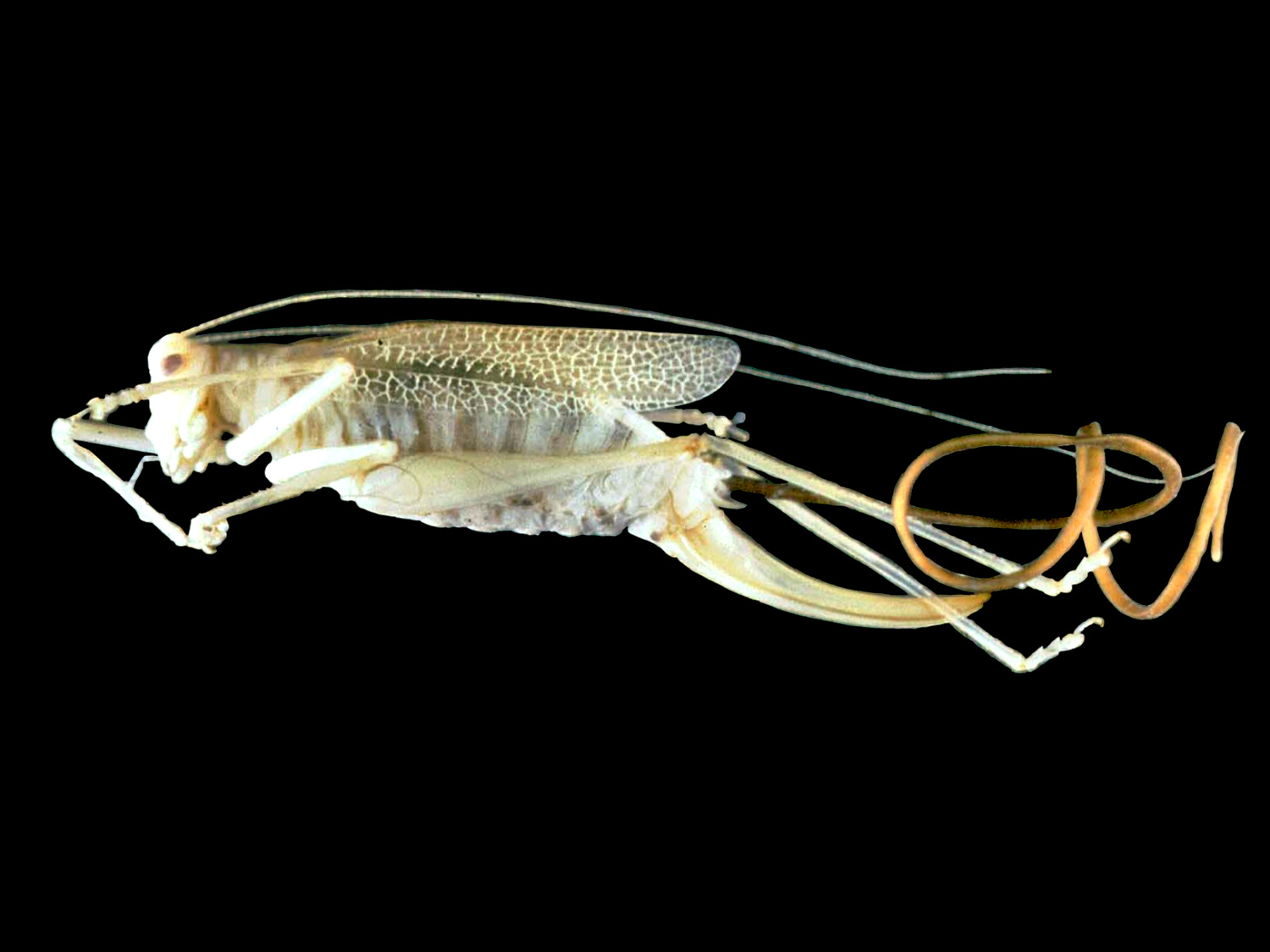|
Stichosome
Stichosome (from Greek ''stichos (στίχος)'' = row; ''soma (σῶµα)'' = body) is a multicellular organ that is very prominent in some stages of nematodes and consists of a longitudinal series of glandular unicellular cells (stichocytes) arranged in a row along the oesophagus The esophagus (American English) or oesophagus (British English; both ), non-technically known also as the food pipe or gullet, is an organ in vertebrates through which food passes, aided by peristaltic contractions, from the pharynx to ... that form the posterior esophageal glands. It opens into the esophageal lumen and apparently functions as a secretory gland and storage organ.Despommier DD, Müller M. The stichosome and its secretion granules in the mature muscle larva of ''Trichinella spiralis''. Journal of Parasitology, 1976 Oct;62(5):775-85. HG Sheffield. Electron microscopy of the bacillary band and stichosome of ''Trichuris muris'' and ''T. vulpis''. Journal of Parasitology, 1963 R ... [...More Info...] [...Related Items...] OR: [Wikipedia] [Google] [Baidu] |
Nematode
The nematodes ( or grc-gre, Νηματώδη; la, Nematoda) or roundworms constitute the phylum Nematoda (also called Nemathelminthes), with plant- parasitic nematodes also known as eelworms. They are a diverse animal phylum inhabiting a broad range of environments. Less formally, they are categorized as Helminths, but are taxonomically classified along with arthropods, tardigrades and other moulting animals in the clade Ecdysozoa, and unlike flatworms, have tubular digestive systems with openings at both ends. Like tardigrades, they have a reduced number of Hox genes, but their sister phylum Nematomorpha has kept the ancestral protostome Hox genotype, which shows that the reduction has occurred within the nematode phylum. Nematode species can be difficult to distinguish from one another. Consequently, estimates of the number of nematode species described to date vary by author and may change rapidly over time. A 2013 survey of animal biodiversity published in the mega ... [...More Info...] [...Related Items...] OR: [Wikipedia] [Google] [Baidu] |
Stichocyte
Stichocytes are glandular unicellular cells arranged in a row along the posterior portion of the oesophagus, each of which communicates by a single pore with the lumen of the oesophagus. They contain mitochondria, rough endoplasmic reticulum, abundant Golgi apparatuses, and usually 1 of 2 types of secretory granules, α-granules and β-granules, indicating secretory function Chitwood, B. G. & Chitwood, M. B. (1950). Introduction to Nematology (Vol. 1). Baltimore: Monumental Printing Co. . Collectively stichocytes form the stichosome. Characteristic of Trichocephalida and Mermithida, two groups of nematode The nematodes ( or grc-gre, Νηματώδη; la, Nematoda) or roundworms constitute the phylum Nematoda (also called Nemathelminthes), with plant- parasitic nematodes also known as eelworms. They are a diverse animal phylum inhabiting a bro ...s. References {{reflist, 30em Helminthology Nematode anatomy ... [...More Info...] [...Related Items...] OR: [Wikipedia] [Google] [Baidu] |
Oesophagus
The esophagus (American English) or oesophagus (British English; both ), non-technically known also as the food pipe or gullet, is an organ in vertebrates through which food passes, aided by peristaltic contractions, from the pharynx to the stomach. The esophagus is a fibromuscular tube, about long in adults, that travels behind the trachea and heart, passes through the diaphragm, and empties into the uppermost region of the stomach. During swallowing, the epiglottis tilts backwards to prevent food from going down the larynx and lungs. The word ''oesophagus'' is from Ancient Greek οἰσοφάγος (oisophágos), from οἴσω (oísō), future form of φέρω (phérō, “I carry”) + ἔφαγον (éphagon, “I ate”). The wall of the esophagus from the lumen outwards consists of mucosa, submucosa (connective tissue), layers of muscle fibers between layers of fibrous tissue, and an outer layer of connective tissue. The mucosa is a stratified squamous epit ... [...More Info...] [...Related Items...] OR: [Wikipedia] [Google] [Baidu] |
Helminthology
Helminthology is the study of parasitic worms (helminths). The field studies the Taxonomy (biology), taxonomy of helminths and their effects on their host (biology), hosts. The origin of the first compound of the word is the Greek ''wikt:ἕλμινς, ἕλμινς'' - helmins, meaning "worm". In the 18th and early 19th century there was wave of publications on helminthology; this period has been described as the science's "Golden Era". During that period the authors Félix Dujardin, William Blaxland Benham, Peter Simon Pallas, Marcus Elieser Bloch, Otto Friedrich Müller, , Biodiversity Heritage Library Johann August Ephraim Goeze, Johann Goeze, Friedrich Albert von Zenker, Friedrich Zenker, Charles Wardell Stiles, Carl Asmund Rudolphi, Otto Friedrich Bernhard von Linstow and Johann Gottfried Bremser started systematic scientific studies of the subject. The Japanese parasitologist Satyu Yamaguti was one of the most active helminthologists of the 20th century; he wrote the ... [...More Info...] [...Related Items...] OR: [Wikipedia] [Google] [Baidu] |



